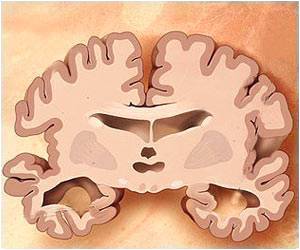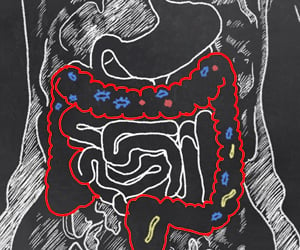Astrocytes play a key role in shaping neural circuits, says study published in Nature.

The discovery adds to a growing body of evidence that substantial remodeling of brain circuits takes place in the adult brain and that astrocytes are master sculptors of its constantly evolving synaptic architecture. The findings also raise the question of whether deficits and excesses in this astrocytic function could underlie, respectively, the loss of this remodeling capacity in old age or the wholesale destruction of synapses that erupts in neurodegenerative disorders, such as Alzheimer's and Parkinson's disease.
"Astrocytes are in the driver's seat when it comes to synapse formation, function and elimination," Barres said. In previous studies, he and his colleagues have shown that astrocytes play a critical role in determining exactly where and when new synapses are generated.
The new study showed that astrocytes' synapse-gobbling behavior persists into adulthood and is triggered by activity in the neurons, suggesting astrocytes may be central to the constant fine-tuning and reconfiguring of brain circuits occurring throughout our lives in response to experiences such as learning, recollection, emotion and motion. While a healthy brain's neurons remain intact for much a person's lifetime, the connections between them — the synapses — are constantly forming, strengthening, weakening or dying.
The Barres team also has previously implicated another brain cell type, collectively known as microglia, in synaptic pruning in early development, when the young brain undergoes ongoing episodes of circuit remodeling. The role of astrocytes in synaptic refining, the new study shows, differs from that of microglia both in timing and mechanism.
Barres' team began to suspect astrocytes' participation in the pruning process when, having developed methods for isolating exceptionally pure populations of different types of brain cells, they saw that the genes for two separate biochemical pathways were active in astrocytes. Both of these pathways are involved in phagocytosis, the trash-collection process by which specialized cells in the body engulf, ingest and digest dead cells; foreign materials, including bacteria; debris from wounds; and so forth. At the leading end of the two pathways were two phagocytic receptors, MERKTK and MEGF10, which in other cell types have been shown to bind to particular proteins on targeted cells or materials, triggering the ensuing engulfment, ingestion and digestion of the targets.
Advertisement
The researchers first demonstrated that both MERKTK and MEGF10, along with their entire tool kits of cooperating proteins, are present in living astrocytes in the mouse brain. (In unpublished work, they have since confirmed this using human astrocytes.) Next, they showed that mouse astrocytes in a lab dish eagerly gobbled up synapses and dispatched them to their lysosomes, highly acidic internal garbage disposals found in most cells in the body. But this engulfment was dependent on astrocytes having functional MEGF10 and MERTK. Disabling one or the other receptor's function cut in half astrocytes' ability to engorge themselves on synapses; knocking out both receptors lowered the synapse-eating activity by about 90 percent.
Advertisement
Experimenting with mice that had entered the critical period for synaptic pruning in the LGN, the investigators labeled the incoming neurons in this system with different-colored stains so their synaptic regions could be identified within astrocytes if the astrocytes ate them up. And sure enough, a lot of this label turned up inside astrocytes' lysosomes, indicating that astrocytes were actively ingesting synapses. Knocking out one or another or, especially, both of the two phagocytic receptors greatly reduced the amount of labeled synaptic material found in astrocytes. Impairing astrocytic MERKTK and MEGF10 function also caused a failure of LGN neurons to restrict their inputs to only neurons from just one eye, clearly implicating astrocytes in that process. Electrophysiology experiments proved that the LGN neurons in the MERKTK- and MEGF10-knockout mice retained an excessive number of synapses, demonstrating that astrocytes play an active role in pruning synapses during development.
Importantly, injection of a drug blocking the transmission of spontaneous waves of electrical impulses originating in the retina severely impaired astrocytes' ability to eat synapses, showing that the synapse-pruning propensity is linked to neuronal activity. Other tests showed that astrocytic phagocytosis of synapses continues into adulthood.
Barres said this raises the question of whether astrocytes function throughout life to continually restructure our neuronal circuitry in response to experientially induced brain activity. If astrocytes' synaptic snacking slows with aging, as that of other phagocytic cell types is known to do, it could reduce the aging brain's capacity to adapt to new experiences, he said. "Maybe you need the astrocytes to gobble up old synapses to make room for new ones."
If so, it may be possible someday to design drugs to keep astrocytes' phagocytic process from slowing, Barres added. Such drugs might prevent the accumulation in aging brains of past-their-prime synapses, which are vulnerable to degeneration in Alzheimer's, Parkinson's and other neurodegenerative disease characterized by massive synapse loss.
Source-Eurekalert













